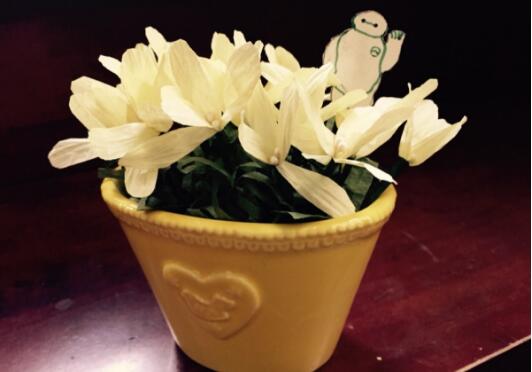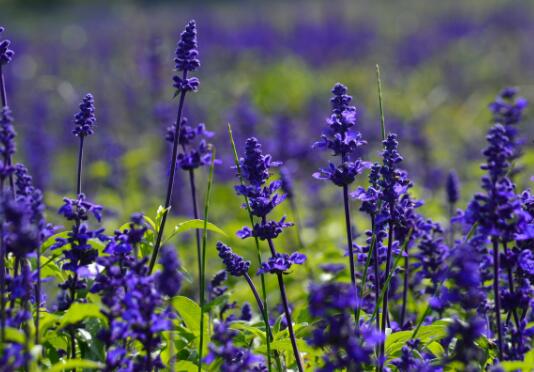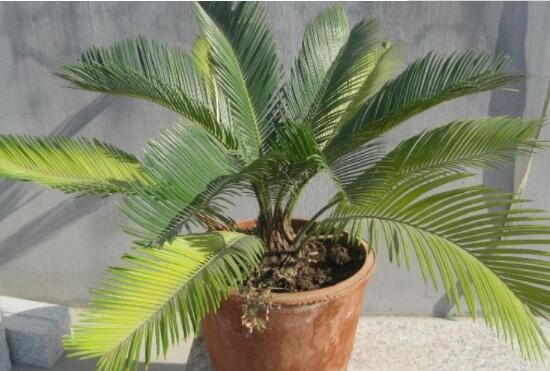What to do with the growth of forsythia? control of diseases and insect pests of Forsythia suspensa / 3 insect pests and 3 diseases
In the growth process of Forsythia suspensa, the last thing we want to encounter is diseases and insect pests, this kind of problem is very harmful to the plant, which will not only affect its ornamental, but also lead to the phenomenon of plant wilt. So what to do when forsythia has grown into worms? How to control the diseases and insect pests of Forsythia suspensa? Next, the editor will take you to learn about it.
First, how to do forsythia forsythia long worm, find the reason

If you want to know what to do with Forsythia suspensa worms, first of all, we have to understand what kind of insects grow, so that we can deal with them pertinently, because the treatment methods of each kind of diseases and insect pests are different, and the details are described in detail below. Friends who have trouble in this respect or not can all come to know about it. After all, it is a precaution.
II. Pest control of Forsythia suspensa (pest)
1. Liriomyza sinensis
Liriomyza huidobrensis this pest will gradually eat the leaf tissue of Forsythia suspensa, thus forming a serpentine white submersible channel, its excreta is black continuous linear production in the passageway, adults lay eggs and feed on round spots, and in serious cases, it will also lead to the phenomenon of plant death.
Control method: the high incidence period of this pest is from February to April every year, at this time we must pay more attention to it. When dealing with the diseases and insect pests of Forsythia suspensa, we can directly use 5000 times the solution of miramine wettable powder to spray and kill it.
two。 Spodoptera litura
Spodoptera litura is a kind of leaf-eating pest, its high incidence period is in the summer every year, so we must pay special attention at this time. This pest mainly feeds on the leaves of Forsythia suspensa, and even causes plant death in severe cases.
Control method: for this kind of forsythia plant diseases and insect pests, we can use 2.5% cypermethrin EC 2000-3000 times to spray it.
3. Slug
Slug, also known as Snotlout, is a mollusk that looks like a snail without a protective shell. It mainly threatens the leaves of Forsythia suspensa, which will gradually erode, resulting in a lot of wormholes in its leaves.
Prevention and control methods: when we deal with the diseases and insect pests of Forsythia suspensa, we can make use of its habit of climbing out and feeding activities after watering, after rain, early morning, evening, and cloudy days, and catch them manually with wire strings.
3. Pest control of Forsythia suspensa (disease)
1. Leaf spot disease
Leaf spot disease, through its name, we know that it is harmful to plant leaves, in the onset of Forsythia suspensa leaves will appear a lot of irregular disease spots, and with the passage of time, there will be small black spots, which will affect the ornamental.
Control methods: when we deal with the diseases and insect pests of Forsythia suspensa, we can use 50% carbendazim wet powder 500 times to spray the diseased plants, which is generally sprayed once every 7-10 days, and can be cured after 3-4 times.
two。 Rot disease
Rot, also known as skin rot, is a common disease of Forsythia suspensa. This disease appears irregularly and may appear in every season. There are many small black spots on the trunk when the disease occurs, and it will gradually spread to the lower part of the tree with the passage of time. Finally, the plant gradually rotted.
Prevention and control methods: when dealing with the diseases and insect pests of Forsythia suspensa, we can use a bottle of mother liquid to add 30 kg of water diluent, and then apply it on the plant, generally about 15 days once, 2-3 times can be cured.
3. Powdery mildew
Powdery mildew is a kind of disease with high incidence of Forsythia suspensa. This disease mainly threatens the leaves of plants. There will be many dust-like mildew spots on the leaves when the disease occurs, which will cause the leaves to turn green at the initial stage, and in serious cases, the whole leaves will be covered with powdery mildew layer. As a result, the plant can not carry out photosynthesis and gradually atrophy.
Control method: in the prevention and control of forsythia's diseases and insect pests, we can use 1000 times of methyl topiramate wettable powder to spray the plant, usually once every 10 days, about 2-3 times can be cured.
What to do when the hundred-day chrysanthemum grows insects? pest control of the hundred-day chrysanthemum / 1 insect pest and 3 diseases
In the process of breeding hundred-day chrysanthemum, the last thing we want to encounter is diseases and insect pests, this kind of problem is very harmful to the plant, which will not only affect the ornamental, but also lead to the phenomenon of plant death. So what should I do when the hundred-day chrysanthemum grows worms? What do you need to do to prevent and control diseases and insect pests of zinnia? Next, the editor will take you to learn about it.
What if the hundred-day chrysanthemum grows worms? find the reason.
If you want to know what to do when a hundred-day chrysanthemum grows, we must first understand what kind of insect is growing, so that we can deal with it pertinently, because the prevention and control methods of each kind of diseases and insect pests are different, and the details are described in detail below. Friends who are troubled in this respect can learn about it. Of course, you can also take a look at what you don't have. After all, you can take precautions against it.
Control of diseases and insect pests of hundred-day chrysanthemum
Aphids
Aphids are one of the most destructive pests on earth, which are harmful to many plants, and zinzhihua is one of them. The main damage of this pest is that adults and nymphs feed on leaves, stems, tender heads and tender panicle sap, resulting in a large loss of plant nutrients and wilting.
Control method: when we deal with the diseases and insect pests of this hundred-day chrysanthemum, we can use 2000-fold spray of imidacloprid wettable powder to spray it.
White star disease
White spot disease mainly threatens the leaves of hundred-day chrysanthemum. Many dark brown disease spots appear on the leaves at the onset of the disease, and then become dark brown around and gray-white in the center. This disease mostly occurs on the lower leaves, and in severe cases, the leaves will also appear the phenomenon of curling and drying.
Prevention and control methods: in view of the diseases and insect pests of this hundred-day chrysanthemum, we can use 75% chlorothalonil wettable powder 500-800 times to spray the diseased plants, usually once every half a month or so, and can be cured after 1-2 times.
Mosaic disease
Mosaic disease is a worldwide virus disease. During the onset of the disease, chlorotic horny spots will appear on the leaves of the hundred-day chrysanthemum, and the color will gradually turn brown with the passage of time, and at the same time, it will also lead to the problem of deformation and yellowing of the leaves. in serious cases, it will also affect the yield and quality of cut flowers.
Control methods: in view of the diseases and insect pests of this hundred-day chrysanthemum, we can use healthy seedlings, not to propagate separately from the diseased plants, or to spray insecticides to control the plants.
Black spot disease
Black spot, also known as brown spot, is a disease that may occur in many plants, and the hundred-day chrysanthemum is no exception. Its leaves, stems and flowers can all be harmed by this disease. This disease will lead to brown and dry leaves, shrinking petals and other symptoms. In serious cases, it can also lead to plant death.
Prevention and control methods: when dealing with the diseases and insect pests of this zinnia, we can use 5000 times of mancozeb or mancozeb spray to spray the disease, and pay special attention to spraying evenly on the back surface of the leaves when spraying.
What to do when buttercups grow worms? pest control of buttercups / 2 insect pests and 3 diseases
In the growth process of buttercup, the last thing we want to encounter is diseases and insect pests, this kind of problem is very harmful to the plant, not only affect the ornamental, but also lead to plant death. So what should we do if buttercups have worms? How to control the diseases and insect pests of Goldilocks? Next, the editor will take you to learn about it.
First, buttercup worms how to do, to find the reason
If you want to know what to do with buttercup worms, we must first understand what kind of insects grow, so that we can carry out targeted treatment, because the treatment methods of each kind of diseases and insect pests are different, and the details are introduced below. Friends who are troubled in this respect can take a look.
II. Pest control of buttercup (pest)
1. Shell worm
Scale insects prefer to grow in a warm and humid environment, which is easy to occur if the growth environment is too dry. It mainly threatens the branches, leaves and fruits of buttercup, which will cause the leaves to turn yellow gradually, the tree potential will gradually decline, and finally wither.
Control method: when we deal with the diseases and insect pests of this buttercup, we can spray it directly with 1000 times of imidophos or 2.5 times of deltamethrin.
two。 Aphids
Aphid is a plant-eating insect, which mainly absorbs the juice from the leaves of Jinfeng, which leads to the gradual green fading of the leaves, and in serious cases, it will lead to the continuous shrinkage and shedding of the leaves and affect its flowering.
Control method: for this kind of buttercup diseases and insect pests, we can directly use 50% marathon emulsion 1000 times or 50% aldicarb wettable powder 3000 times to spray it.
III. Pest control of Goldilocks (diseases)
1. Powdery mildew
Powdery mildew is a disease that may occur in many plants, and buttercup is no exception. During the disease, many white dust-like disease spots will appear on its leaves, and will gradually cover the whole leaf over time. As a result, the plant is unable to carry out photosynthesis and gradually die.
Control methods: when we deal with the diseases and insect pests of buttercup, we can use 1000 times of methyl topiramate wettable powder to spray the diseased plants, generally spraying once every half a month, about twice can be cured.
two。 Blight disease
This disease mainly affects the rhizome of buttercup, resulting in blackening or constriction of the rhizome, and white mildew in a humid environment. In general, the leaves of plants will wither within a few days when they are affected by this disease, and the whole plant will gradually die over time.
Control methods: in view of the diseases and insect pests of Goldilocks, we can use 1200 times of methyl iridofos EC to control the diseased plants, usually once every 7-10 days, 2-3 times can be cured.
3. Brown spot disease
Brown spot, also known as leaf spot, is a disease caused by fungi, which mainly threatens the leaves of plants. Many brown spots will appear on the leaves during the disease, and will spread gradually with the passage of time, resulting in plant death.
Prevention and control methods: when dealing with the diseases and insect pests of this buttercup, we can use 25% carbendazim wettable powder 300-600 times to prevent and cure it. Generally, the medicine is used once every 10 days or so, and it can be cured once or twice.
- Prev

What about the worms of sage? control of diseases and insect pests of sage / 2 insect pests 2 diseases
When we cultivate sage, the last thing we want to encounter is diseases and insect pests, this kind of problem is very harmful to the plant, not only affect the ornamental, but also lead to the phenomenon of plant death. What about the worms of sage? How to control the diseases and insect pests of sage?
- Next

What to do when the iron tree grows insects? pest control of the iron tree / 2 insects and 2 diseases are sprayed with medicine.
I believe many flower friends know that the iron tree is poisonous, but even so, some people still keep it at home because the iron tree is really good-looking. However, in the process of breeding, because of negligence, the iron tree will also grow insects and get sick, which will destroy its ornamental. So, what should we do if the iron tree grows worms?
Related
- Fuxing push coffee new agricultural production and marketing class: lack of small-scale processing plants
- Jujube rice field leisure farm deep ploughing Yilan for five years to create a space for organic food and play
- Nongyu Farm-A trial of organic papaya for brave women with advanced technology
- Four points for attention in the prevention and control of diseases and insect pests of edible fungi
- How to add nutrient solution to Edible Fungi
- Is there any good way to control edible fungus mites?
- Open Inoculation Technology of Edible Fungi
- Is there any clever way to use fertilizer for edible fungus in winter?
- What agents are used to kill the pathogens of edible fungi in the mushroom shed?
- Rapid drying of Edible Fungi

